Best lenses for astrophotography in 2024
We've reviewed the best lenses for astrophotography to help you capture stunning and detailed images of the night sky, with options to suit every budget.
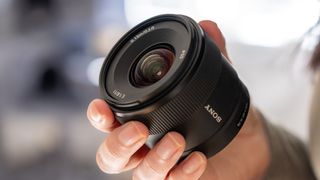
1. The list in brief ↴
2. Best overall
3. Best Sony lens
4. Best Nikon Z-mount lens
5. Best widely compatible prime
6. Best Canon RF lens
7. Best Sony prime lens
8. Best for versatility
9. Best Canon EF lens
10. Best APS-C Sony lens
11. Best APS-C DSLR lens
12. Best Nikon DSLR lens
13. Best budget lens
14. Lenses for astro FAQs
15. How we test
If you're looking to get serious about night-sky photography, one of the best lenses for astrophotography could be a great addition to your kit. These specialist lenses are designed with large apertures and wide focal lengths to help let in as much light as possible for capturing detailed images of the stars and galaxies above. Ideally, astrophotographers should be looking for an aperture of f/2.8 or lower and a focal length of 20mm or less to capture the best shots.
The best astrophotography lenses tend to be bigger and heavier, as well as more costly, than standard lenses due to the size and quality of the glass. Since they represent a significant investment, our expert reviewers have made sure to note what they liked about each lens, as well as any negatives to be aware of.
If you're new to astrophotography, be sure to check out our guide to astrophotography for beginners and consider pairing one of the lenses from this list with one of the best cameras for astrophotography. We also have guides to other handy accessories like the best tripods and best camera backpacks for transporting your kit out in the field.

Kimberley Lane is a landscape & seascape photographer living in South Wales. Originally using photography as a way to cope with health issues, she aims to portray a feeling of calm and peace through her images. Her work has been featured in a number of national photography magazines and she is a regular contributor to Space.com.
The quick list
Below we've summarized the most important information about our top picks among lenses for astrophotography, including their main characteristics and whom they might be best for. If you want to know more about a product before you make a purchase, click 'Read more below' and you'll find more in-depth specs and performance reviews.

The best lens for astrophotography overall
As far as ultra-wide lenses go, the Sigma 14mm f/1.4 DG DN Art is close to unbeatable in terms of its performance and quality.

Best Sony lens
If you're looking for the very best quality in your astrophotography images and can afford to splash out, then this Sony lens is a sure winner.
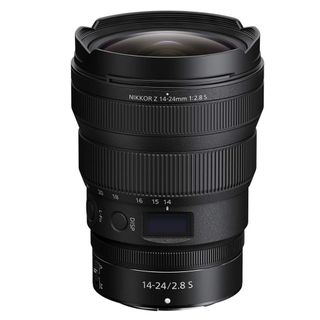
Best Nikon Z-mount lens
The Nikkor Z 14-24mm f/2.8 S is a lightweight and compact lens that provides exceptional image quality, with little distortion and vignetting.

The best widely compatible prime lens
As far as ultra-wide lenses go, the Sigma 14mm f/1.8 DG HSM Art is close to unbeatable in terms of its performance and quality.
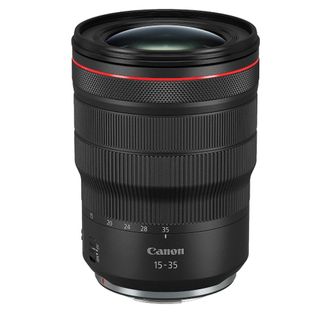
Best Canon RF lens
The RF 15-35mm f/2.8L IS USM is Canon’s best ultra-wide zoom lens which makes it a sound investment for photographers, but it's quite pricey.
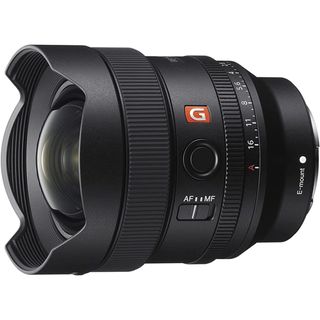
Best Sony prime lens
This lens is ideal for seasoned astrophotographers or photographers who need a wide field of view combined with sharp optics and a fast f/1.8 maximum aperture.
Load the next 6 products ↴
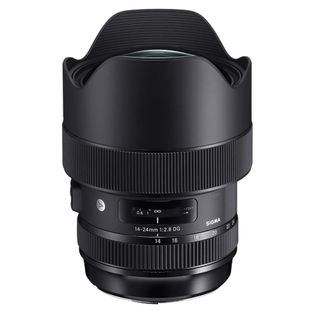
Best for versatility
The Sigma 14-24mm F2.8 DG HSM ART easily holds its own against other high-end, wide-angle, big-aperture lenses and does so for a pretty impressive amount of money.
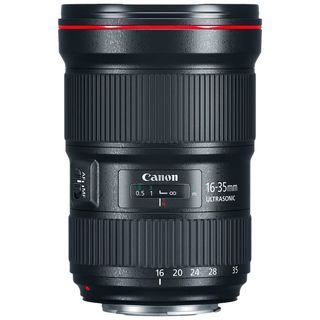
Best Canon EF lens
For more experienced photographers, this lens is certainly worthy of serious consideration if wide-field photography is one of your prime areas of interest. That said, it comes with a high price tag.
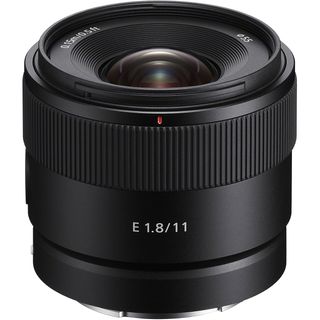
Best APS-C Sony lens
This lens is what APS-C Sony users have been waiting for. It's lightweight, compact and produces fantastic results. It's great for astrophotography thanks to it's ultra-wide focal length and fast f/1.8 aperture.
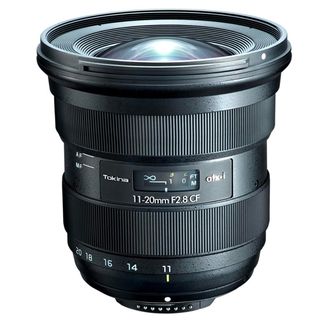
Best APS-C DSLR lens
For anyone seeking a fast, ultra-wide zoom lens for APS-C cameras, the Tokina atx-i 11-20mm f/2.8 CF is our top recommendation. It’s sleek, slim, lightweight, and brilliantly sharp.
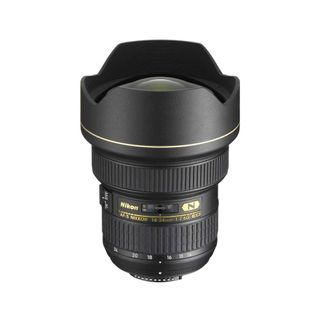
Best Nikon DSLR lens
The Nikon AF-S 14-24mm f/2.8 ED is still a go-to for many professionals and amateurs alike. It provides sharp, clean, straight lines for landscape or interior photography but also works well in low light.

Best budget lens
If you’re looking for an inexpensive ultrawide lens for astrophotography or landscape/architecture use, then there's very little else on the market to touch the Rokinon/Samyang 14mm f/2.8 lens.
Best lenses for astrophotography we recommend in 2024
Why you can trust Space.com
The best lens for astrophotography overall







Specifications
Reasons to buy
Reasons to avoid
✅ You want the best: Optically, we think this might be the best lens for astrophotography out there.
✅ Maximum aperture is a deal-breaker: A maximum of f/1.4 is ideal for astro.
✅ Build quality is important: We feel like this lens is built to last.
❌ You need something lightweight: This lens is quite heavy and best used with a tripod.
❌ Zoom is important: The fixed 14mm focal length can be restrictive for some.
🔎 The Sigma 14mm f/1.4 DG DN Art lens is staggeringly good for astrophotography. Better yet, its speedy autofocusing and ability to de-click the aperture ring for video makes it useful for hybrid shooting as well. ★★★★½
The Sigma 14mm f/1.4 DG DN Art offers an ideal astrophotography combination with an ultra-wide 14mm view accompanied by impressive low-light capabilities.
Design: It's a large and heavy lens, but it's robust, well-built and has a pleasingly tactile feel to it. You probably wouldn't want to use it for long handheld, but for astrophotographers using a tripod this lens is a real gem. It also has an innovative lens cap which doubles as a filter holder and can be used even when the lens hood is in place.
Performance: You get fantastic sharpness across the entire image with this lens, which is no mean feat for a lens this wide. Distortion is well managed even at the edge of the frame, and the autofocus is crisp and clear with a manual focusing ring which is a joy to use. Its low-light abilities are formidable, allowing you to easily reach for higher ISOs and producing pin-sharp stars.
Functionality: This Sigma lens offers a range of features which extend its use outside astrophotography as well. Aperture control is seamless, with a manual ring which features detents at every third of a stop as well as an auto mode and a switch to declick the control when shooting video. Filters can only be applied at the mount end due to the bulbous front element, but it includes Sigma's GP-11 filter holder at the back to make this as easy as possible.
Although this lens could potentially be used for architecture, portraiture and live event photography as well, it's probably best suited to specialist astrophotography where its low-light abilities remain unbeaten.
- Read our full Sigma 14mm f/1.4 DG DN Art Lens review
| Attributes | Notes |
|---|---|
| Design | Sturdy but bulky. |
| Performance | Incredible sharpness and no noticeable distortion. |
| Functionality | Fast aperture for night sky shooting. |
Best Sony lens


Specifications
Reasons to buy
Reasons to avoid
✅ You want exceptional image quality: this lens has incredible optical clarity.
✅ You want a large viewing angle: the shortest focal length gives an angle of 122 degrees.
❌ You're on a budget: this lens is one of the most expensive on this list.
❌ You use front filters: they are not supported on this lens due to the domed glass.
🔎 The Sony FE 12-24mm f/2.8 GM is great if you don't want to commit to one photography niche. It is versatile enough to have the option to use the wider 12mm for nighttime shots, while also being able to zoom in for daytime landscapes. ★★★★
Design: The Sony FE 12-24mm f/2.8 GM belongs to Sony's elite 'G-Master' lens series, renowned for outstanding quality, though it's also one of the priciest options here. If you're looking for an ultra-wide-angle lens that preserves excellent build quality but without the added weight, it's incredibly attractive.
With its f/2.8 aperture and remarkably wide field of view, it offers exceptional performance. Despite this, it maintains a relatively lightweight and compact design compared to others, weighing just 1.87 lbs (847g).
The glass is shielded by a petal-shaped integrated hood, but the glass is big and bulbous, so you can't use a filter on the front of the lens due to its rounded nature. However, there is a slot on the back of the lens for gel filters.
Performance: The image quality from this lens is nothing less than spectacular. For wide-angle landscape photography, this lens produced stunning images and we loved shooting with it. When we reviewed the Sony FE 12-24 f/2.8 GM lens, the images were extremely sharp from the center to the corners throughout the full focal length range, even at the widest aperture of f/2.8.
Functionality: The shortest focal length of 12mm gives a whopping viewing angle of 122 degrees which is perfect for capturing huge portions of the Milky Way and night sky landscape. With many other lenses, such a wide portion of the sky can only be captured by taking panoramas.
If you want top-notch quality in your astrophotography and have the budget for it, this Sony lens is a winner. While the price is undoubtedly high, its versatility makes it a potential all-in-one wide-field astro lens that will last for years, and, being a zoom lens, can turn its hand to other styles of photography, too. If your budget is tighter but you still want an ultra-wide-angle lens for astro, the next one on this list might be a better fit for you.
- Read our full Sony FE 12-24 f/2.8 GM lens review
| Attributes | Notes |
|---|---|
| Design | Very sturdy and well-built, light for its size. |
| Performance | Incredibly sharp. |
| Functionality | Fixed f/2.8 aperture. |
Best Nikon Z-mount

Nikon Z 14-24mm f/2.8 S
Our expert review:
Specifications
Reasons to buy
Reasons to avoid
✅ You want a lightweight lens: at just 1.4 lbs, this is one of the lighter picks on this list.
✅ You use filters a lot: both front and rear filters are supported.
✅ You want to reduce post-processing: this lens creates minimal aberrations.
❌ You're on a budget: this lens is one of the more expensive ones on this list.
❌ You already own filters: this lens requires large 112mm filters.
🔎 The Nikkor Z 14-24mm f/2.8 S combines a lightweight and compact design with exceptional image quality. It creates very few aberrations and has a handy LCD display. ★★★★½
Design: This Nikon zoom lens is notably the most compact among full-frame f/2.8 ultra-wide-angle zoom lenses, measuring just 5 inches (124.5mm) in length. It's lightweight at 1.7 lbs (650g), maintains a wide aperture and offers a broad viewing angle at the shorter end of its focal range. Additionally, it's fully weather-sealed for protection against various weather conditions.
When you compare it to similar models from other brands, this lens has a less bulbous front element. This means you can easily attach 112mm filters to the front using the included lens hood, making it more versatile for daytime and astrophotography. Keep in mind that these filters might be a bit expensive, but having the option is a great feature. Plus, you won't need to buy a separate rear filter system.
The customizable Lens Function (L-fn) button allows users to quickly change exposure and adjust settings without having to flick through endless menus, which is useful when you need to act fast to avoid missing a shot.
Performance: The Nikkor Z 14-24mm f/2.8 S provides outstanding image quality with minimal distortion, vignetting and aberrations. The LCD on the lens barrel is especially helpful for astrophotographers, allowing you to make adjustments in the dark without the need for a headlamp.
| Attributes | Notes |
|---|---|
| Design | Lightweight and compact. |
| Performance | No noticeable coma or aberrations. |
| Functionality | Fast f/2.8 constant aperture. |
Best widely compatible prime


Specifications
Reasons to buy
Reasons to avoid
✅ You want exceptional image quality: you can't get much better results than with this lens.
✅ You want a large maximum aperture: with a range of f/1.8 - f/16, this lens is hard to beat.
✅ You want a sturdy lens: this high-quality build means this lens will last.
❌ You want a lightweight lens: at 2.58 lbs, this isn't the lightest lens on this list.
❌ You want a versatile focal length: at 14mm fixed, this lens is a bit niche.
❌ You use filters a lot: this lens isn't equipped with a filter thread.
🔎 The Sigma 14mm F1.8 DG HSM ART lens really is a phenomenal lens for night-sky photography. If you’re after a lens that will get you long shutter speeds without a star tracker, with technically excellent results throughout its aperture range, this is a piece of kit that will serve you well. ★★★★★
Design: In our review of the Sigma 14mm f/1.8 DG HSM Art lens, the first thing that stood out was its weight. At 2.58 lbs (1,170g), it's quite heavy compared to other lenses. However, this weight usually indicates higher optical quality. Also, if you mainly shoot astrophotography with a tripod, the weight won't be a big issue unless you're trekking long distances with it to remote dark sky spots.
This lens is incredibly sturdy and has the bonus of being weather-sealed, which is great for outdoor shooting. While astrophotographers usually don't shoot in bad weather at night, this feature is useful for daytime photography like landscapes or architecture. For nighttime shooting, its fixed focal length and wide field of view are ideal for capturing expansive views of the night sky.
Like some of the other lenses on this list, it's worth noting that the front element is big and rounded, meaning you can't use any filters on the front. While it's not a deal-breaker for astrophotography, it's something to consider if you intend to use the lens in the daytime and want to protect the glass better, or if you want to do any kind of long exposure shooting during the day with ND filters.
Performance: The lens excels in optical performance, providing exceptional image quality all-round. The chromatic aberration (color fringing) is minimal even when shooting at wide apertures and you also won't see any significant issue with image distortion — something which certainly cannot be said for all ultra-wide lenses.
Even at its widest f/1.8 aperture, the stars remain sharp and clear all across the frame. However, closing the aperture slightly can help minimize distortion in the corners of the image frame when you're shooting wide open.
As far as ultra-wide lenses go, the Sigma 14mm f/1.8 DG HSM Art is close to unbeatable in terms of its performance and quality.
- Read our full Sigma 14mm f/1.8 DG HSM Art review
| Attributes | Notes |
|---|---|
| Design | Well built, but can feel heavy. |
| Performance | Outstanding image quality. |
| Functionality | Wide maximum f/1.8 aperture. |
Best Canon RF lens





Specifications
Reasons to buy
Reasons to avoid
✅ You want excellent image quality: this lens uses the highest quality L-series glass to guarantee stellar results.
✅ You want a portable lens: this is designed to be carried around, weighing just 1.85 lbs.
✅ You want good image stabilization: this lens has 5-stops of IS.
❌ You're on a budget: this lens is one of the more expensive ones on this list.
❌ You want edge-to-edge sharpness: this lens reveals softer edges at f/2.8.
🔎 The Canon RF 15-35mm f/2.8L IS USM is the brand's best ultra-wide zoom lens which makes it a sound investment for photographers. Unfortunately, it’s also quite pricey so it may put off some that are on stricter budgets. ★★★★½
Design: The Canon RF 15-25mm f/2.8 IS USM has a simple and sleek design, with just two buttons on the lens itself to operate the autofocus/manual focus and stabilizer. It maintains the same shape down the entire length of the lens barrel, so it's easy to store away in whatever camera bag you use.
This lens has a big 82mm filter thread right on the front, so you can easily attach screw-in filters without needing an adapter. We really appreciated how smoothly and quietly the focal length and focus rings work, which makes it great for shooting time-lapses and recording videos.
Performance: In our Canon RF 15-25mm f/2.8 IS USM review, we tested the lens out with the Canon EOS R6 camera and were extremely impressed with the results. The autofocusing speed was excellent and it produced super sharp images, with only a tiny amount of sharpness dropoff right at the very edge of the frame when we were shooting wide open at f/2.8.
We noticed a very slight chromatic aberration around the edge of the image when we reviewed the photos, but only when zoomed in to 400%. While that's not ideal at this price point, especially for astrophotographers shooting wide open, the overall image quality was stunning.
Functionality: With a zoom range of 15-35mm, it's versatile enough for wide landscape shots and detailed close-ups. This lens offers strong image stabilization, providing five stops on its own and up to eight stops when paired with a Canon RF mount camera with in-body stabilization, making it perfect for handheld shooting. For anyone using Canon RF mount cameras, we think it's an essential addition to your kit bag.
- Read our full Canon RF 15-25mm f/2.8 IS USM review
| Attributes | Notes |
|---|---|
| Design | Sleek & portable design. |
| Performance | Softer images at f/2.8. |
| Functionality | Has 5 stop image stabilization. |
Best Sony prime lens


Specifications
Reasons to buy
Reasons to avoid
✅ You want a lightweight lens: at just 1.01 lbs, this is one of the lighter picks on this list.
✅ You care about the looks: this lens boasts an excellent build and design.
✅ You want outstanding image quality: the results obtained with this lens are impressive.
❌ You use front filters: they're not supported.
❌ You want image stabilization: this lens is not equipped with Sony's Optical SteadyShot technology.
🔎 The Sony 14mm f/1.8 G Master is ideal for seasoned astrophotographers or professional street photographers that need a wide field of view combined with sharp optics and a fast f/1.8 maximum aperture. ★★★★½
Design: In our Sony FE 14mm f/1.8 G Master lens review we enjoyed having the option of a clickable aperture ring on this camera because it means you can easily change the aperture even when you can't see the screen very well — for example, when you're shooting from low angles. One thing to note, though, is that the bulbous front element means that any filters will need to be fitted onto the rear of the lens.
A big selling point of the Sony FE 14mm f/1.8 G Master lens is that it's almost unfathomably lightweight for a 14mm ultra-wide lens. At only 1.01 lbs (460g), it's 2.5x lighter than Sigma's 14mm f/1.8 DG HSM Art lens and doesn't look at all out of place on a full-frame camera body. It also makes it a dream to use, particularly if you like having the option of shooting handheld.
Performance: The image quality on this lens is incredibly impressive and it manages to produce clean, sharp images even when shooting wide open at f/1.8. There's a tiny amount of vignetting that can be easily fixed during processing, but you get barely any barrelling, chromatic aberration or distortion. In addition to its super-sharp images, it's also capable of producing stunning bokeh and dramatic sunstars with apertures down to f/4, making it versatile for daytime use as well as astrophotography.
Functionality: This lens excels in low light with its fast f/1.8 aperture, which allows you to use longer shutter speeds to capture things like star trails. The wide angle lets you capture large areas of sky, as well as facilitating easy close-up shots during the day alongside its effective autofocus. The only thing it lacks is image stabilization, but with many cameras featuring in-body stabilization these days, this may or may not be a problem for you.
- Read our full Sony FE 14mm f/1.8 GM review
| Attributes | Notes |
|---|---|
| Design | Surprisingly compact and lightweight. |
| Performance | Beautiful image quality. |
| Functionality | No image stabilization, but it doesn't suffer for it. |
Best for versatility


Specifications
Reasons to buy
Reasons to avoid
✅ You want excellent optical clarity: this lens' is almost perfect.
✅ You want a flexible focal range: with a range of 14-24mm, this lens gives you options.
✅ You want a sturdy lens: this has an excellent build quality.
❌ You want a lightweight lens: at 2.54 lbs, this isn't one of the lightest lenses in this guide.
❌ You use filters a lot: this lens has no filter threads.
❌ You want a large maximum aperture: this lens taps out at f/2.8.
🔎 The Sigma 14-24mm F2.8 DG HSM ART is a fantastically useful lens for astrophotographers. It easily holds its own against other high-end, wide-angle, big-aperture lenses and does so for a pretty impressive amount of money. ★★★★★
Design: The Sigma 14-24mm f/2.8 DG HSM is another lens from Sigma's 'Art' range, which is renowned for its optical quality and high-class engineering. This lens is optimized for full-frame cameras and has the robust build quality that Sigma is known for. It features smooth zoom and focus rings, and its autofocus is both fast and almost silent, making it great for daytime shooting and video recording.
When we reviewed the Sigma 14-24mm f/2.8 DG HSM we were struck by its similarity to the fixed 14mm focal length of Sigma's 14mm f/1.8 DG HSM Art. But the f/2.8 version has a superior zoom range of 14mm through to 24mm, making it a useful lens for anyone who shoots multiple styles of photography in addition to astrophotography.
There are versatile mounting options available with this lens. It's primarily compatible with Nikon and Canon cameras, but if you have the Canon version, you can also use it on the Sony E-Mount system with Sigma's MC-11 mount converter.
Performance: The lens delivers vibrant and sharp images with clean star rendering all across the frame, with minimal to no chromatic aberration even at its widest f/2.8 aperture. Sigma claims that there's absolutely no image distortion on the Sigma 14-24mm F2.8 DG HSM ART lens, which is a bold statement to make, but after using it, we'd have to agree.
Functionality: While zoom lenses offer the flexibility of variable focal lengths compared to prime lenses, they typically have a narrower maximum aperture, like f/2.8. This means they can't gather as much light as a f/1.8 lens, but still, the f/2.8 aperture is perfectly adequate for occasional astrophotography.
- Read our full Sigma 14-24mm f/2.8 DG HSM review
| Attributes | Notes |
|---|---|
| Design | Strong, robust build quality Sigma is known for. |
| Performance | No image distortion and little to no aberration. |
| Functionality | Constant f/2.8 aperture. |
Best Canon EF lens




Specifications
Reasons to buy
Reasons to avoid
✅ You want good autofocus: it is fast and accurate on this lens.
✅ You want to produce sharp images: the quality is amazing across the field.
✅ You want to color correct: this lens can correct chromatic aberration and distortion.
❌ You want image stabilization: it is not equipped on this lens.
❌ You're on a budget: this lens is on the expensive side.
❌ You want a large maximum aperture: this lens taps out at f/2.8.
🔎 For the more experienced photographers for whom this lens is aimed, the Canon EF 16-35mm f/2.8L III USM is certainly worthy of serious consideration if wide-field photography (either astronomical or terrestrial!) is one of your prime areas of interest. ★★★★★
Design: Canon L lenses are renowned for their high quality, making them a favorite among photographers, whether you're just starting out or a seasoned pro. The sought-after Canon EF 16-35mm f/2.8L III USM improves upon its predecessor, the Mark II, by addressing various issues.
The lens is user-friendly and robust, equipped with a fast and precise USM autofocus system. While manual focusing is primarily used for night sky photography, this capability adds versatility, making the lens suitable for daytime shooting as well.
This lens was clearly made with astrophotography in mind. It has a constant aperture of f/2.8 and a focal range that provides 20mm of versatility for capturing a wide field of view across the night sky, and can also turn its hand to other styles of photography, too.
Performance: This lens can effectively fix chromatic aberration and distortion, although very meticulous users might detect slight distortions at the extreme corners of the image. However, you'd only notice this distortion when closely inspecting the entire image at high magnification (often known as pixel peeping), so it's unlikely to be a major concern for most users.
Its performance isn't flawless, but considering the f/2.8 design, it's remarkably impressive and far superior to cheaper lenses. Despite the higher price, this lens excels at capturing exceptional wide-field images of the night sky.
Functionality: When reviewing the Canon EF 16-35mm f/2.8L III USM, we found it to be a significant step up on the Mk II in terms of image quality. Canon has significantly enhanced the autofocus system, diaphragm and optics, enabling this lens to produce sharper images at the edge of the frame when using the widest aperture settings and focal length.
Sadly, these upgrades have come at the expense of dropping the image stabilization, but this likely won't bother astrophotographers since it would need to be switched off for long exposure shooting at night anyway — not to mention the camera would also be on a tripod.
- Read our full Canon EF 16-35mm f/2.8L III USM review
| Attributes | Notes |
|---|---|
| Design | Sturdy and user friendly. |
| Performance | Pin-sharp image quality across the field. |
| Functionality | Fast and accurate autofocus. |